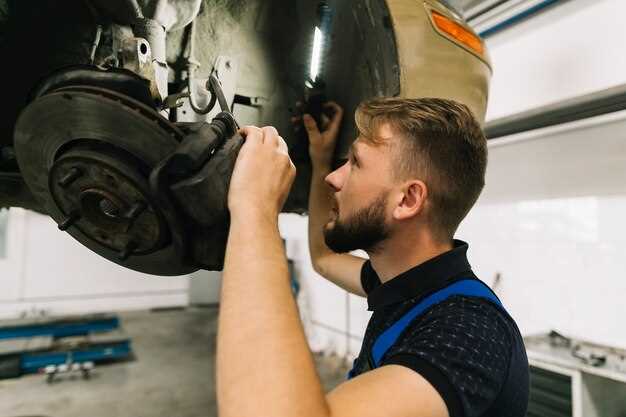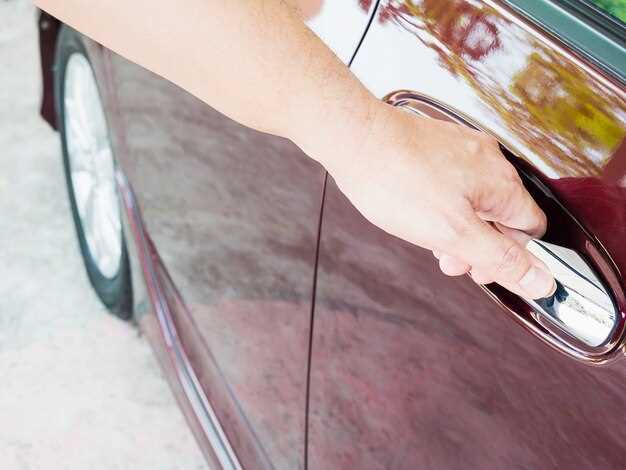Start with a clear plan. Identify the vehicle you’ll be modifying and the engine you’d like to install. Research compatibility between the two, focusing on the technical specifications such as mounting points, wiring harnesses, and cooling systems. This step will save you time and resources, ensuring a smoother transition.
Next, gather the necessary tools and parts. A complete engine swap typically requires more than just the engine itself. Make a checklist of components, including motor mounts, transmission adapters, and exhaust systems. This preparation streamlines the process and reduces potential setbacks.
Consider learning the basics of engine compatibility. Engines from the same manufacturer often share mounting brackets and wiring schematics, providing an easier swap experience. However, integrating an engine from a different make requires more modifications and adjustments, impacting both performance and reliability.
Safety should remain a priority throughout your project. Always work in a well-ventilated area and use protective gear. Engine swaps can present hazards, including heavy lifting and working with automotive fluids. Staying safe allows you to focus on the exciting aspects of the project.
Finally, document each step. Take notes and photos during your engine swap for future reference. This documentation can assist in troubleshooting if issues arise and serve as a valuable resource for any future projects.
Choosing the Right Engine for Your Vehicle
Select an engine that matches your vehicle’s specifications. Check the manufacturer’s recommendations for your model, which will provide insights into compatible engine types. Pay attention to engine size, power output, and mounting points to ensure a smooth fitment.
Consider your performance goals. If you seek better acceleration or towing capacity, look for a more powerful engine. For improved fuel efficiency, consider smaller displacement engines or those designed with efficiency in mind.
Evaluate the engine’s condition. A used engine can save money, but inspect it for wear and tear. Look for leaks, rust, and listen for unusual noises during operation. If possible, run a compression test to gauge its health.
Research engine compatibility with your vehicle’s transmission. Different engines may require specific transmissions, which can increase installation complexity and costs. Ensure they work together seamlessly to maintain performance and reliability.
Investigate aftermarket support. Choosing an engine with a robust aftermarket presence simplifies sourcing parts and upgrades. Popular engines often have a wider selection of performance mods available, allowing for easy customization.
Lastly, budget for additional modifications. Engine swaps often necessitate upgrades to the exhaust system, cooling system, and wiring harnesses. Factor in all associated costs to avoid surprises later on.
Assessing Compatibility and Necessary Modifications
Confirm the compatibility of your engine choice with the existing components of your vehicle. Start with a compatibility list that includes the engine model, mount locations, and transmission type. Verify that the engine physically fits within the engine bay, paying close attention to the height and width to prevent clearance issues with other parts.
Check the transmission compatibility as well. If the new engine requires a different transmission, be ready to source one that matches, ensuring it can handle the engine’s power output. Upgrading to a stronger transmission may involve adapting or replacing driveshafts and differential components to handle increased torque.
Evaluate the wiring harness and electronic systems. Swapping an engine often necessitates using the harness from the donor vehicle or modifying your current harness to connect to the new engine’s sensors and ECU. Research wiring diagrams and common issues other enthusiasts encountered; this can save time and headaches.
Assess cooling requirements. A more powerful engine may need a bigger radiator or an upgraded cooling system. Consider the placement of the radiator and the fans, ensuring your setup maintains efficient temperature regulation under load.
Inspect the exhaust system, which likely requires modifications to accommodate the new engine’s manifold. Custom exhaust work, including headers and piping, may be necessary to optimize performance while ensuring proper emissions compliance.
Lastly, confirm that your suspension and braking systems meet safety standards for the engine’s power output. An upgrade might necessitate stronger brakes or stiffer suspension components. Research previous swaps for insights on parts and adjustments that others found beneficial.
Gathering Tools and Equipment for an Engine Swap
Begin by collecting a sturdy engine hoist. This tool allows for safe and controlled lifting of the engine. Ensure it has adequate weight capacity for your specific engine model.
Next, secure a set of basic hand tools. You will need:
- Socket and ratchet set
- Wrenches (both metric and standard)
- Screwdrivers (flathead and Phillips)
- Pliers and wire cutters
- Torque wrench for accurate fastening
Gather specific tools for the engine type you’re working with. For example:
- Classical engines may require specialized mega-wrenches.
- Modern engines often come with electronic components needing specific tools for disassembly.
Obtain a jack and jack stands to safely elevate the vehicle. This ensures clearance for engine removal and installation. Always use jack stands for added safety after raising the car.
Don’t forget about fluid catch pans. During the swap, you will likely encounter oil, coolant, and other fluids. Having these handy prevents messy spills and keeps the workspace clean.
Consider getting a magnetic parts tray. This tool keeps screws, bolts, and small components organized and prevents loss during the project.
Wearing safety gear is also advised. Equip yourself with gloves and safety glasses to protect from debris and chemicals.
Lastly, a repair manual specific to your vehicle provides invaluable guidance throughout the process. This resource offers diagrams, torque specifications, and troubleshooting tips tailored to your model.
Step-by-Step Guide to Removing the Old Engine
Gather the necessary tools: wrenches, ratchets, sockets, an engine hoist, and safety gear. Ensure the vehicle is parked on a level surface and turn off the ignition. Disconnect the battery to avoid electrical issues during the removal.
Next, drain all fluids from the engine. Remove the oil drain plug and allow the oil to flow into a suitable container. Follow by draining the coolant via the radiator petcock. Dispose of fluids properly.
Remove any components obstructing access to the engine. This includes the air intake, exhaust manifold, and any associated sensors. Document the connections to make reassembly easier. Consider using a container for small parts.
Next, detach the drive belts. Loosen the tensioner pulley and slide the belts off the pulleys. Proceed to disconnect the fuel lines and electrical connections carefully. Label each connection to avoid confusion later.
| Components to Remove | Description |
|---|---|
| Air Intake | Detach the air filter and hoses leading to the throttle body. |
| Exhaust Manifold | Remove bolts connecting the manifold to the cylinder head. |
| Drive Belts | Loosen the tension and slide off the belts. |
| Fuel Lines | Use a line wrench to disconnect without damaging the fittings. |
| Electrical Connections | Carefully unplug sensors and connectors; label each one. |
Now, secure the engine hoist to the engine. Attach the hoist hooks to solid mounting points on the engine. Double-check all connections are clear before lifting.
Lift slowly and steadily, monitoring for any stuck components. Once the engine is free, guide it out of the engine bay while ensuring nothing gets caught.
Inspect the old engine for any reusable parts as you transition to the new engine. Clear the workspace and prepare to install the new engine following the manufacturer’s guidelines.
Installing the New Engine: Key Considerations
Prepare the workspace to ensure it’s clean and organized. Gather all necessary tools and components before starting the installation. This prevents delays and confusion during the process.
Inspect the new engine carefully for any damage or defects. Check for missing components to avoid complications once the installation begins. If any issues are found, address them before proceeding.
Ensure compatibility between the new engine and your vehicle’s existing systems. Verify that the engine mounts, wiring harnesses, and transmission match. This compatibility simplifies installation and enhances performance.
Use the correct fluids specific to the new engine. This includes oil, coolant, and transmission fluid. Substituting fluids can lead to premature wear or failure.
Install the engine using appropriate lifting equipment. Safety remains paramount, so if you’re using a hoist, ensure it’s rated for the engine’s weight. Securely attach the engine to the hoist and carefully maneuver it into place.
Connect all necessary wiring and hoses before securing the engine in position. Labeling original connections will aid in this step. Proper connections are crucial for functionality and stability.
After installation, double-check all bolts and fasteners. Use a torque wrench to apply the manufacturer’s specified torque. This prevents leaks or failures due to loose components.
Once everything is secured, fill the engine with fluids, then check for leaks. Start the engine and observe for any unusual sounds or issues. Conduct a short test drive, monitoring performance and temperature closely.
Document any adjustments made during the installation. Keep a record for future reference, which can help with maintenance or future repairs.
Troubleshooting Common Issues After an Engine Swap
Check for fluid leaks immediately after the engine swap. Look under the vehicle for oil, coolant, or transmission fluid. Tighten any loose fittings or replace gaskets if necessary.
Listen for unusual noises during engine operation. Rattles or knocking sounds often indicate that components may be misaligned or improperly installed. Inspect belts and pulleys for proper tension and alignment.
Monitor engine temperature closely. An overheating engine can signal a problem with the cooling system. Verify that all hoses are correctly connected and that the radiator is functioning properly.
Check the electrical connections to ensure everything is plugged in correctly. Loose or corroded connections can lead to poor performance or failure to start. Examine the battery terminals and ground connections.
Evaluate the exhaust system for leaks or unusual emissions. A faulty exhaust can lead to poor engine performance. Inspect gaskets and joints to ensure a proper seal.
If the engine runs rough or stalls, consider checking fuel delivery. Ensure the fuel lines are correctly connected and that the fuel pump is operational. Test fuel pressure to confirm proper delivery to the injectors.
Scan the vehicle’s computer for error codes. Modern vehicles often provide diagnostic trouble codes that pinpoint issues. Address any codes that appear during the scan for a clearer understanding of underlying problems.
Finally, ensure all necessary fluids are adequately filled, including oil and coolant. Low levels can lead to significant engine issues. If everything seems fine but problems persist, retrace your steps and examine the installation process for any overlooked details.







